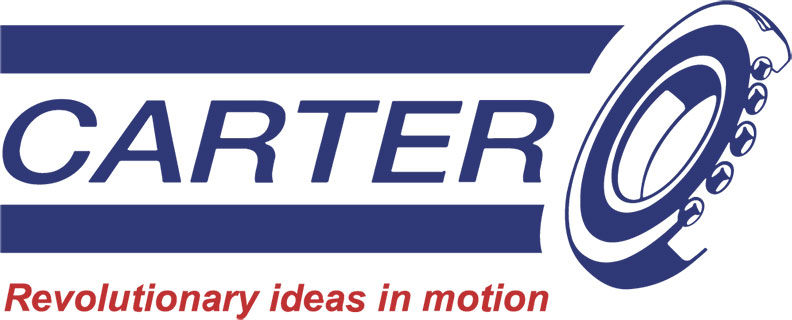Gimbals...possibly not the most understood or appreciated of the vast array of engineering devices used in today’s numerous high-technology control applications but none the less, an essential component for successful space projects in both commercial and defence applications. Gimbals as we know them today have been around since the 15th century where they were used to prevent the unwanted movement of the early compasses on ships, also for photographic applications, such as keeping cameras still while filming. Fast forward to the present and gimbals have a multitude of applications especially in critical control applications, such as in space flight by enabling precise control and stabilisation of NASA spacecraft, rockets and satellite systems.
Currently there is a growing demand for high precision, high reliability bearings and gimbals to support space flight applications and Oxfordshire based CARTER MANUFACTURING is ideally placed to meet this demand. Established as a global supplier of precision bearings, and aerospace bearing tooling equipment, Carter will be exhibiting these products at the upcoming DSEI Global Defence Showcase in London, 12th-15thSeptember 2023.

What do gimbals consist of and what exactly are they used for?
Typically, gimbals consist of two rings fixed together axially at 90º to each other and are designed to dampen any movement such as roll, pitch and yaw on a component that is susceptible to this type of movement. In space flight they enable precise control and stabilisation of objects such as an engine, sensor, or instrument, helping to maintain its orientation or change it, while keeping another part of the system stable.
Why are they so important for Space Flight?
In space there is no atmosphere to provide aerodynamic stability, so spacecraft and rockets rely on thrusters, engines and reaction control systems for propulsion and manoeuvrability. Gimbals allow these engines to be swivelled and pointed in different directions, enabling precise control over the spacecraft’s orientation and trajectory so are essential for achieving accurate course corrections, orbital adjustments and rendezvous manoeuvres.
Stabilisation and Pointing
Many space missions require precise pointing and stabilisation of on-board instruments and sensors and gimbals allow these components to be mounted on rotating platforms that are designed to counteract any unwanted motion or vibrations. This ensures optimum precision, enabling instruments to focus on their intended targets, without being affected by the spacecraft’s movement.
Energy Efficiency
Gimbals are also used to steer rocket engines during thrusting, allowing for precise control of the spacecraft’s trajectory. By using gimbals to adjust the engines direction means spacecraft can make more efficient use of propellant, minimising fuel consumption and extending a missions duration.
Communication and Observation
Spacecraft often need to maintain consistent orientation for communication with ground control stations, or for observing celestial objects. Gimbals help to keep antennas and other optical instruments pointed in the right direction, which optimises signal strength helping to ensure consistent data transmission. They also enable telescopes and cameras to capture clear images of specific targets.
Attitude Control
The orientation or attitude of a spacecraft is critical for achieving specific mission objectives, such as maintaining the proper orientation for solar panel exposure or managing heat dissipation. Gimbals provide the means to adjust and maintain the spacecraft’s attitude, allowing it to respond to changes in external conditions and maintain optimal operational conditions.
Established for over 20 years, Carter is acknowledged as a global supplier of precision bearings and established brands which are used in the most demanding and critical space flight applications. This is possible thanks to the support of our partners whose products we supply. These include Silverthin, recognised as a global leader in the design and manufacture of high-precision thin section bearings and NES (Napoleon Engineering Services) who produce engineered bearing solutions for the most critical environments - space research and exploration.
NES offers the key benefit of ‘Space Heritage’ a status that is crucial to being considered a supplier to the space industry sector. This is underlined by the fact that NES has supported both NASA missions in the USA and also projects initiated by the European ESA by supplying components for life-critical space applications.
In addition to these key suppliers is Carter’s sister company UNISIS, our specialist manufacturing division catering supplying a wide range of custom and ‘niche’ products such as; aerospace bearings, lightweight, corrosion-resistant and high-temperature bearings.
The bearings supplied for space applications are able to withstand extreme vacuum environments, extreme temperatures and vibration levels meeting ABEC 1F,3F,5F or 7F precision levels. Carter’s expertise includes working closely with customers; defining, obtaining and sharing quantitative data regarding bearing and gimbal performance in the actual space environment. For example, applications which have extreme high vacuum, zero gravity and those with penetrating radiation, all of which present extremely challenging engineering situations.
To meet the current demands and to exploit the latest technological advances, now and in the future, Carter has significantly expanded its operational facilities over the past 5 years. For example, setting up distribution centres in Minnesota, US and Valencia in Spain and most recently - significant investment in the UNISIS manufacturing facilities in the UK.












Radio wave weapon knocks out drone swarms
Probably. A radio-controlled drone cannot be completely shielded to RF, else you´d lose the ability to control it. The fibre optical cable removes...